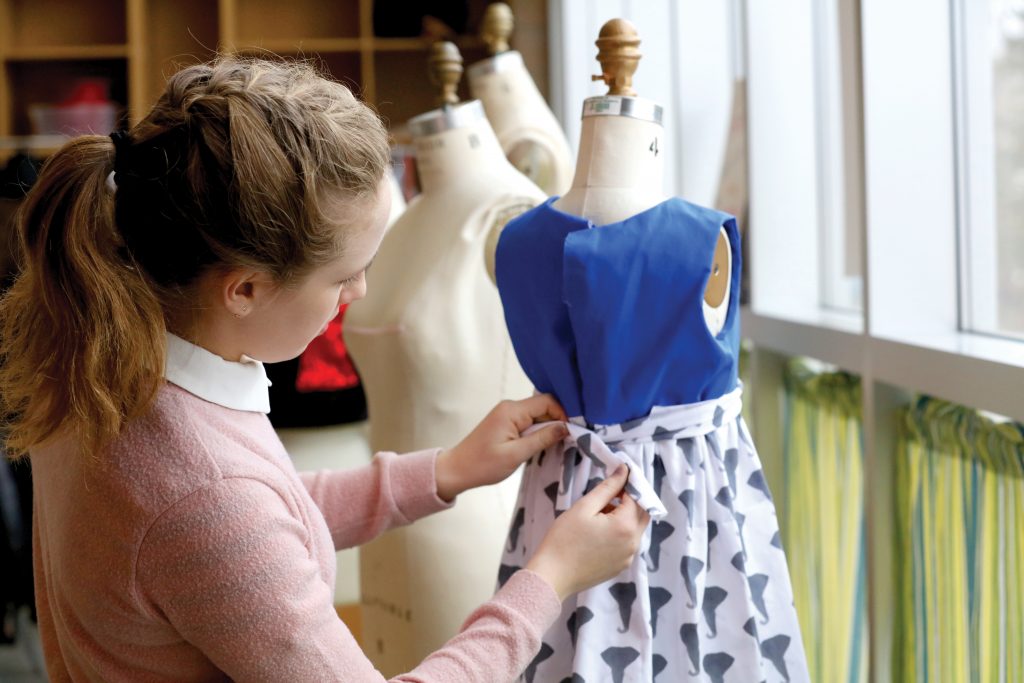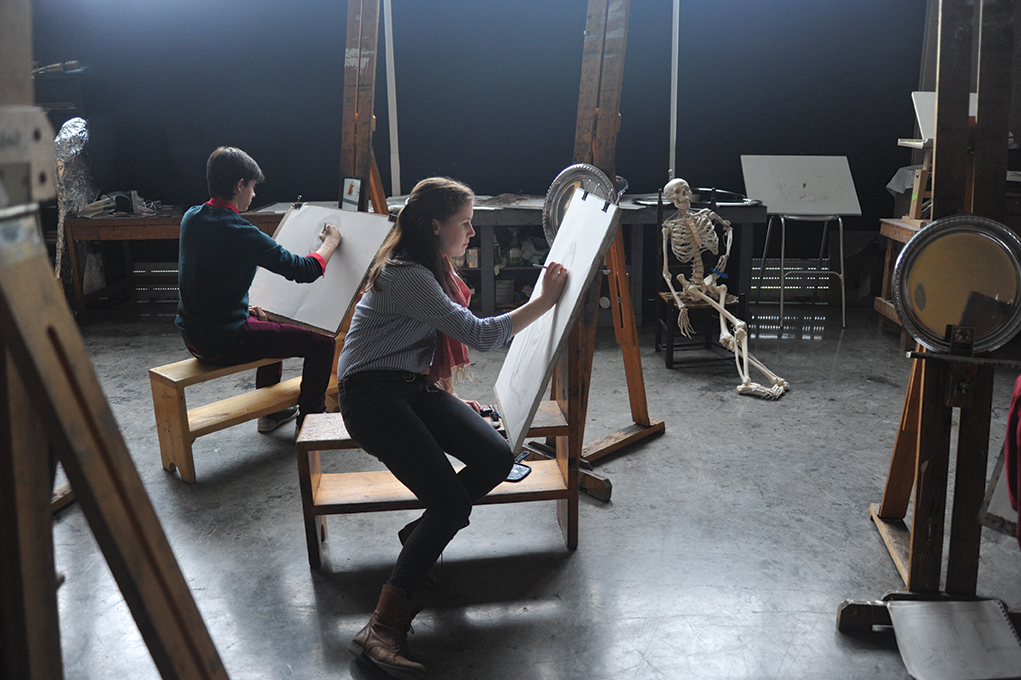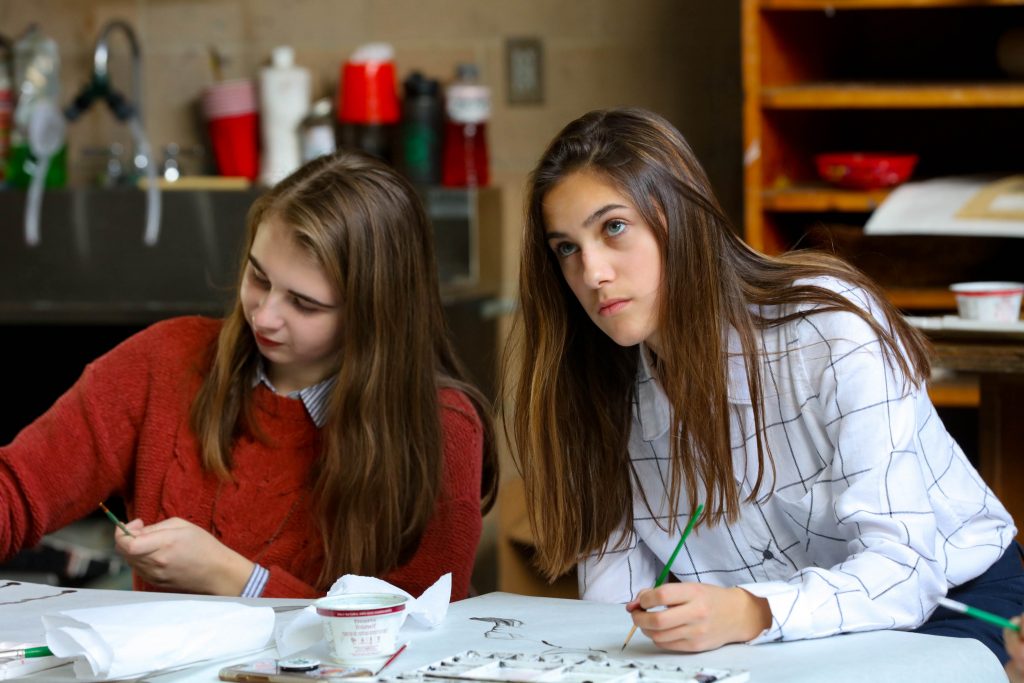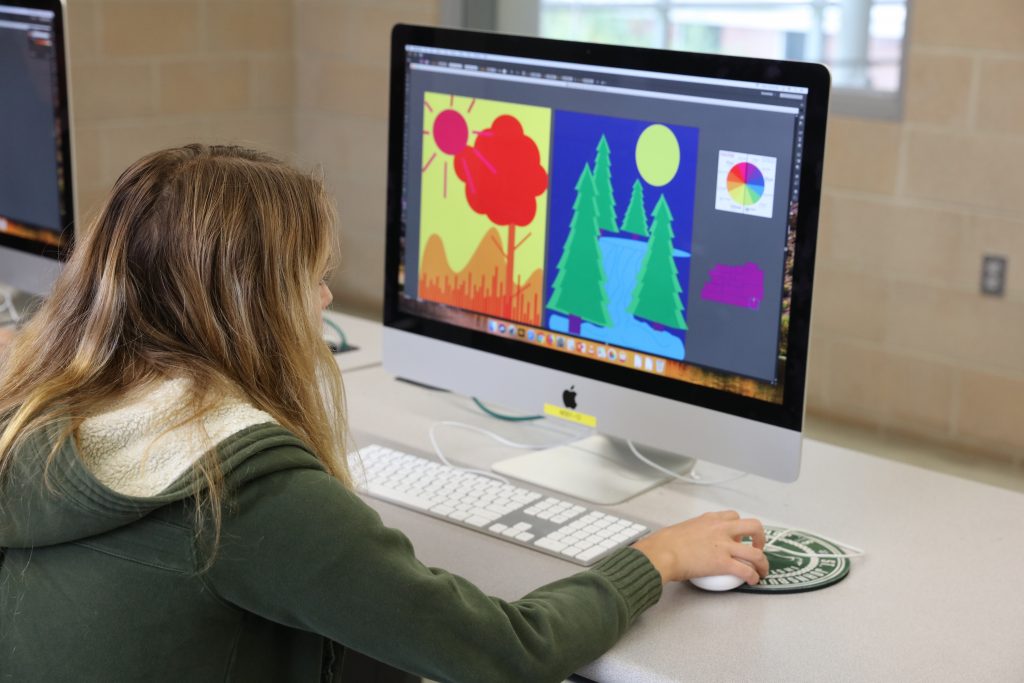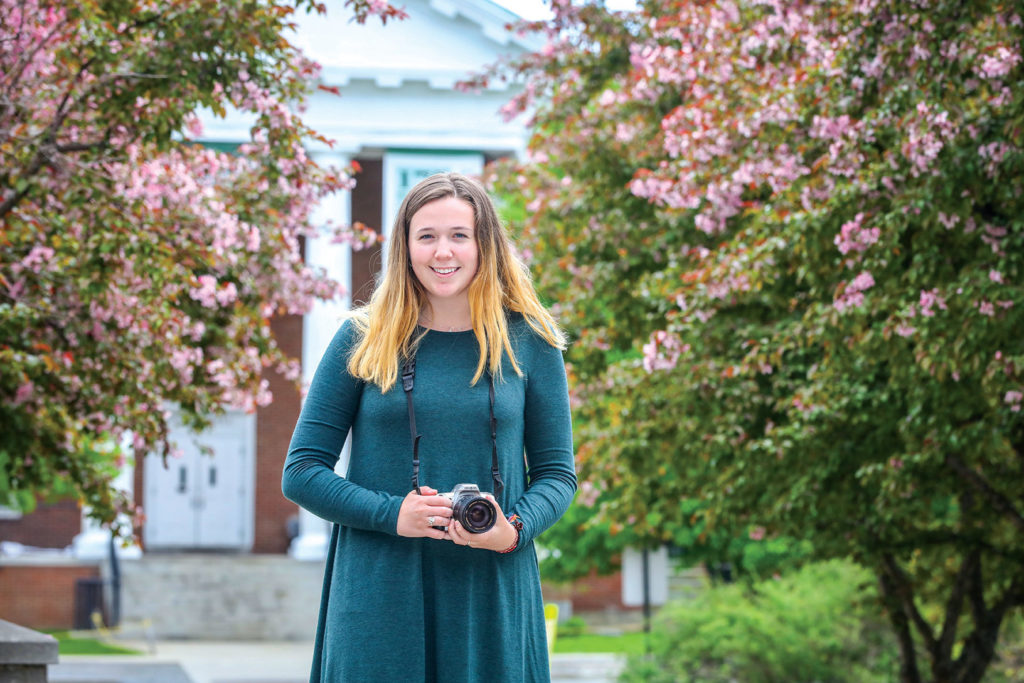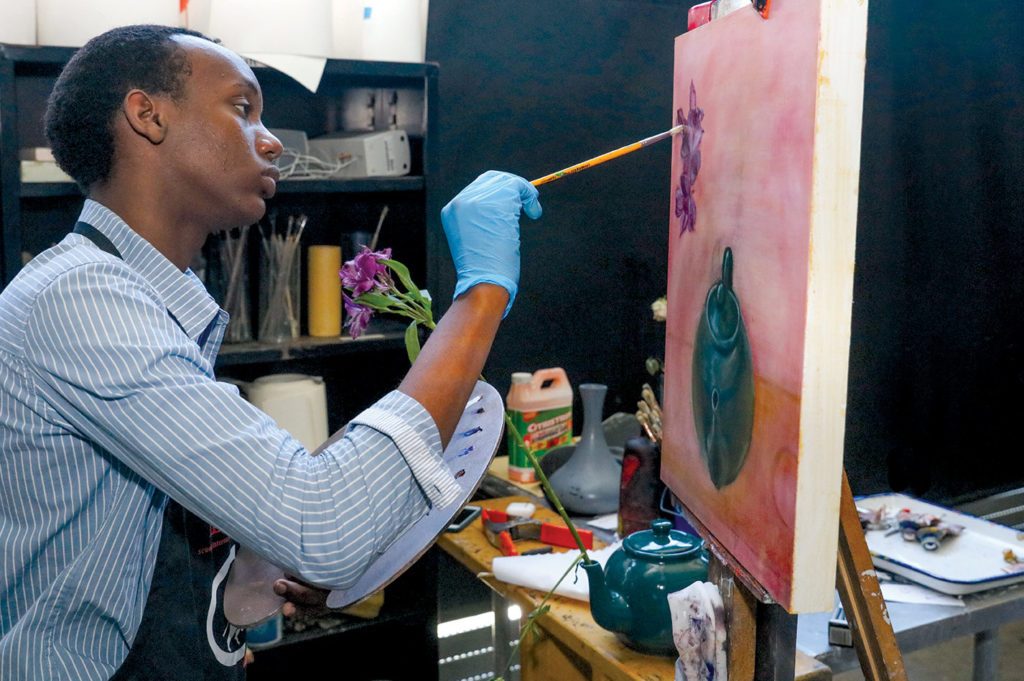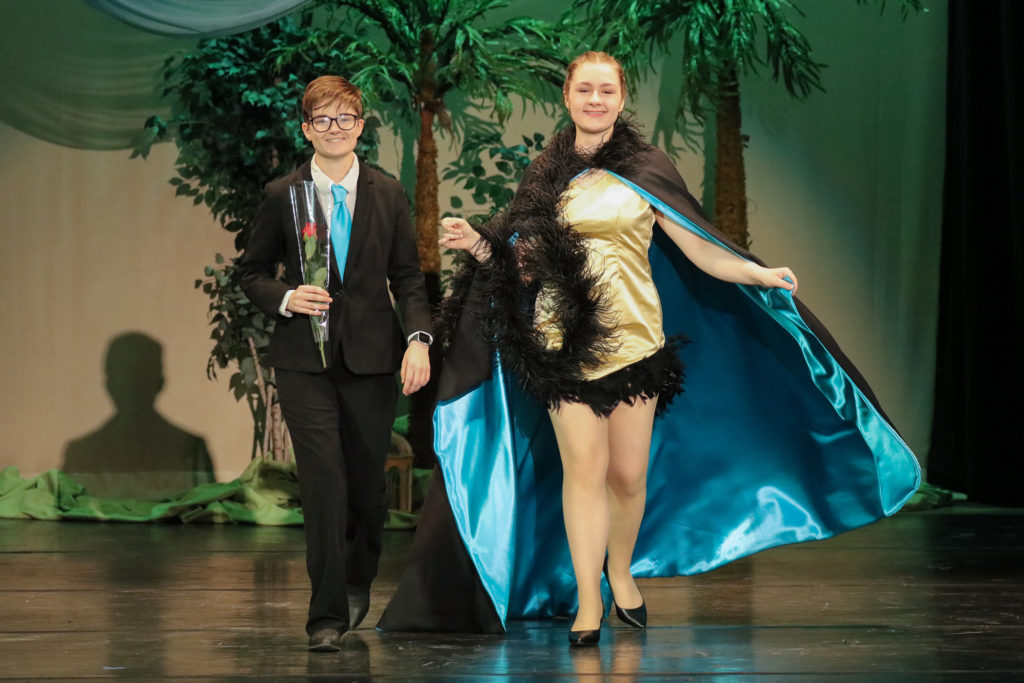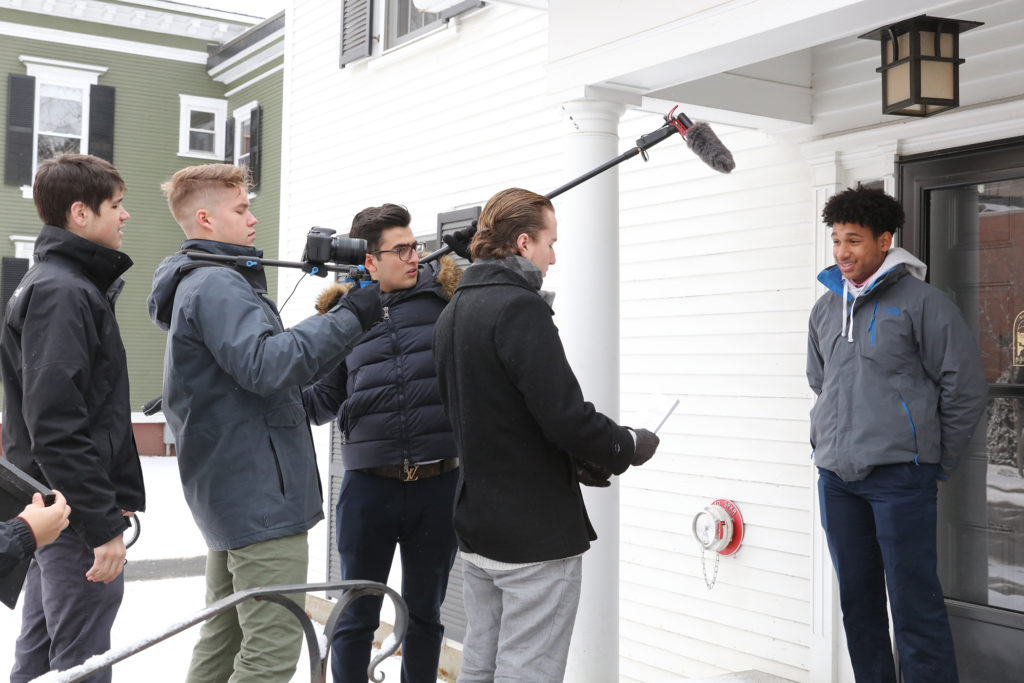Visual Arts
The visual arts courses at St. Johnsbury Academy include the courses listed below as well as advanced classes in all mediums. Our distinguished visual arts instructors are professional working artists who, along with teaching, create and exhibit their own work.
The extensive visual art courses offered below are supplemented with extracurricular clubs such as: the Art Club, Fashion Club, Photo Lab, and Intaglio Society.
Foundations of Drawing and Painting
Drawing utilizes simple material to explore both our visual perception, and the structural relationships of the world. It is a fundamental tool for effective visual communication. Drawing builds a repertoire of problem-solving strategies that can be utilized in all aspects of life and learning. Students may also explore basic painting mediums such as ink wash and watercolor. This course introduces a foundation of technical and language skills, upon which further visual art studies will build.
Anatomy and Figure Drawing
Knowledge of the structure, balance, and movement of the human figure is an essential skill in many fields of visual art, such as fashion design and animation, and an excellent training in observation and visual problem-solving for any artist. This course builds on observational drawing skills introduced and practiced in Foundations of Drawing and Painting.
Printmaking
This course is an introduction to fine art printmaking and an exploration of creative process through intaglio and relief printing. Students will create original compositions from life, develop and revise the images on copper plates and wood blocks, then print the images by hand or on an etching press. Presentation of prints for group critique and public exhibition are an important part of this course. Students will maintain a body of working proofs and artist proofs that will add breadth and depth to their art portfolios.
Photography
Students will learn the foundation principles of photography and the skills and techniques of traditional film processing and printmaking through a fine-art framework. Composition, elements of design, aesthetics, visual literacy, and communication will be emphasized.
Filmmaking
Students will explore the fundamental principles of filmmaking. Focusing on storyboarding, cinematography, and editing, students will demonstrate that the primary means of storytelling in film is through visual composition. Students work in a collaborative environment to finished product, and will have the opportunity to focus on specific areas of the process.
Fashion Design
Our fashion design courses take students from the basics of sewing, design, and color through creating a garment from design concept to completion. Advanced fashion design students participate in our annual fashion show for which they design their own collections, select the best design, and choose models to take the designs through the process of pattern-making, fitting, and sewing to the finished ‘runway’ product. In addition, our Advanced Fashion Art students create children’s wear outfits to complement the theme, experimenting with textile print design and other embellishments.
Many student designers from our fashion design program develop a passion for design that shapes their lives beyond the Academy. Each year students enter prestigious design schools all over the world and many continue on to successful careers in the fashion industry.
Digital Design
This course will expose students to the process of graphic design using computer technology as a tool. Techniques of digital enhancement of photographs and scanned images, and the creation of digital images will be used to explore the principles of graphic design. Learning the use of Adobe Illustrator and Adobe Photoshop will be major components of this course.
Water-based Painting
Students will learn various techniques and effects using water-based paints. They will explore watercolor, gouache, and egg tempera. Watercolor is transparent and allows light to reflect from the surface of the paper. Gouache is a type of paint consisting of a pigment suspended in water which is more opaque than watercolor and provides greater light reflection. The course will finish with a study in egg tempera which is a permanent and fast drying painting medium using a pigment mixed with a binder (such as egg yolk). Its use dates back to the 1st century A.D. and was an easel painting method used until oil painting was invented in 1500 A.D. The course will cover design, composition, value and color in landscape, still life, and portrait painting.
Oil Painting
Using the medium of oil paint, students will build upon their observational drawing skills to create compositions exploring luminosity, color, transparency, and opacity; as well as form, atmosphere, and other concepts introduced in Foundations of Drawing and Painting. Gaining knowledge about the materials and craft of oil painting will be central to the course. Students will grind pigment into oil to make their own paints, prepare their own surfaces to paint upon and learn to handle an oil/varnish medium.
Clay
Students will be exposed to a wide variety of hand-building techniques and extensive work on the potter’s wheel with a strong emphasis on both design and functionality. Students will learn to make serving bowls, pouring vessels, serving trays, coffee mugs and tumblers, lidded forms, and a variety of other pieces using hump and slump molds, coil building, slab construction, and, of course, the wheel. Students may also learn decorative carving techniques as well as the use of decorative stamps and sprigs.
Additionally, a wide variety of glazing processes will be covered including the use of slips, underglazes, engobes, overglazes, sigillattas, and traditional glazes.
AP Art
Students will be involved in a concentrated studio of drawing, two-dimensional art and/or three-dimensional art. Emphasis in each area begins with fundamental techniques and includes design principles, the creative process, historical perspective, and contemporary trends. All students will be expected to do substantial outside-of-class work as they complete a portfolio in one or more of these areas for submission to the Advanced Placement program. It is recommended that this portfolio course be taken only after a student has taken at least one advanced art course that focuses on a particular medium.


